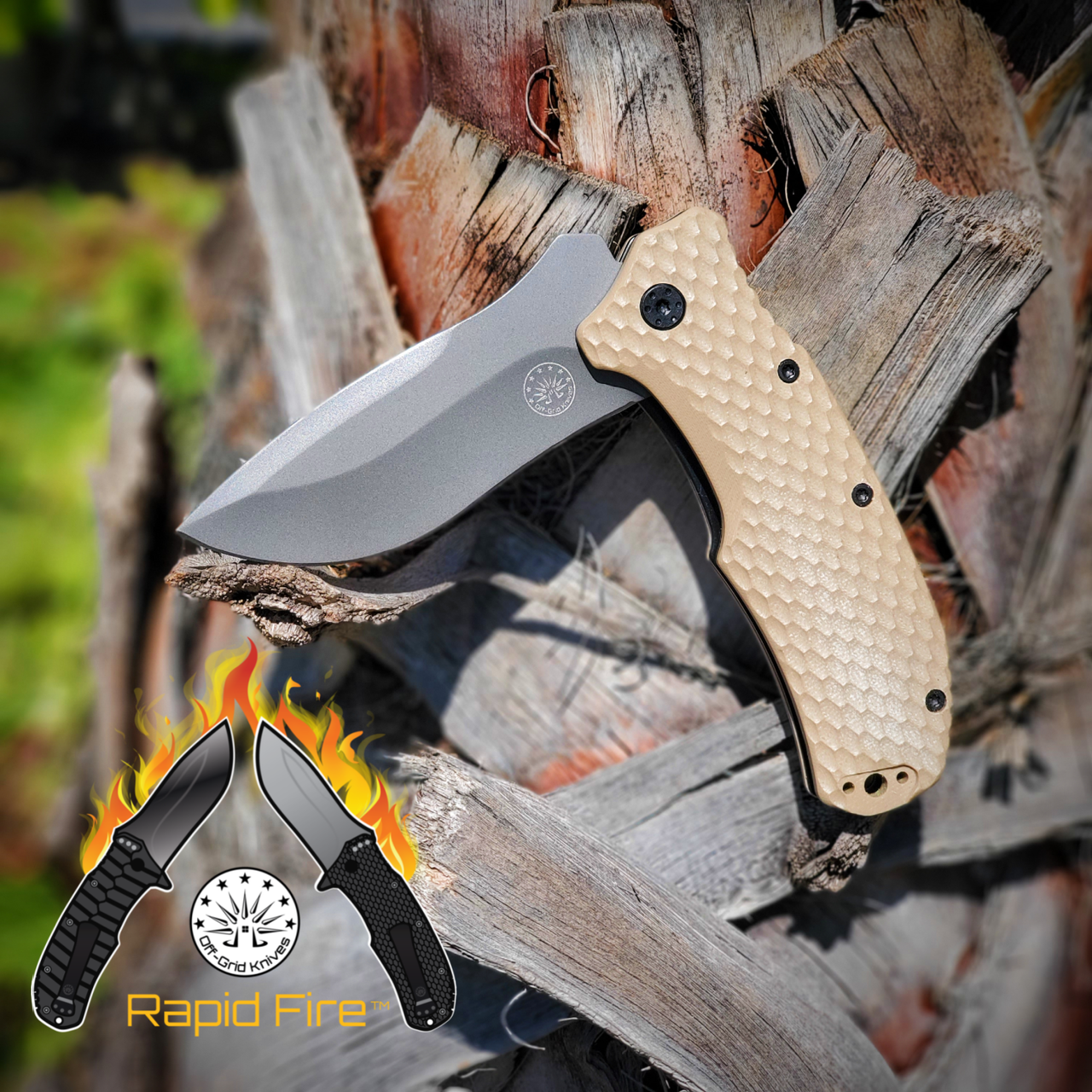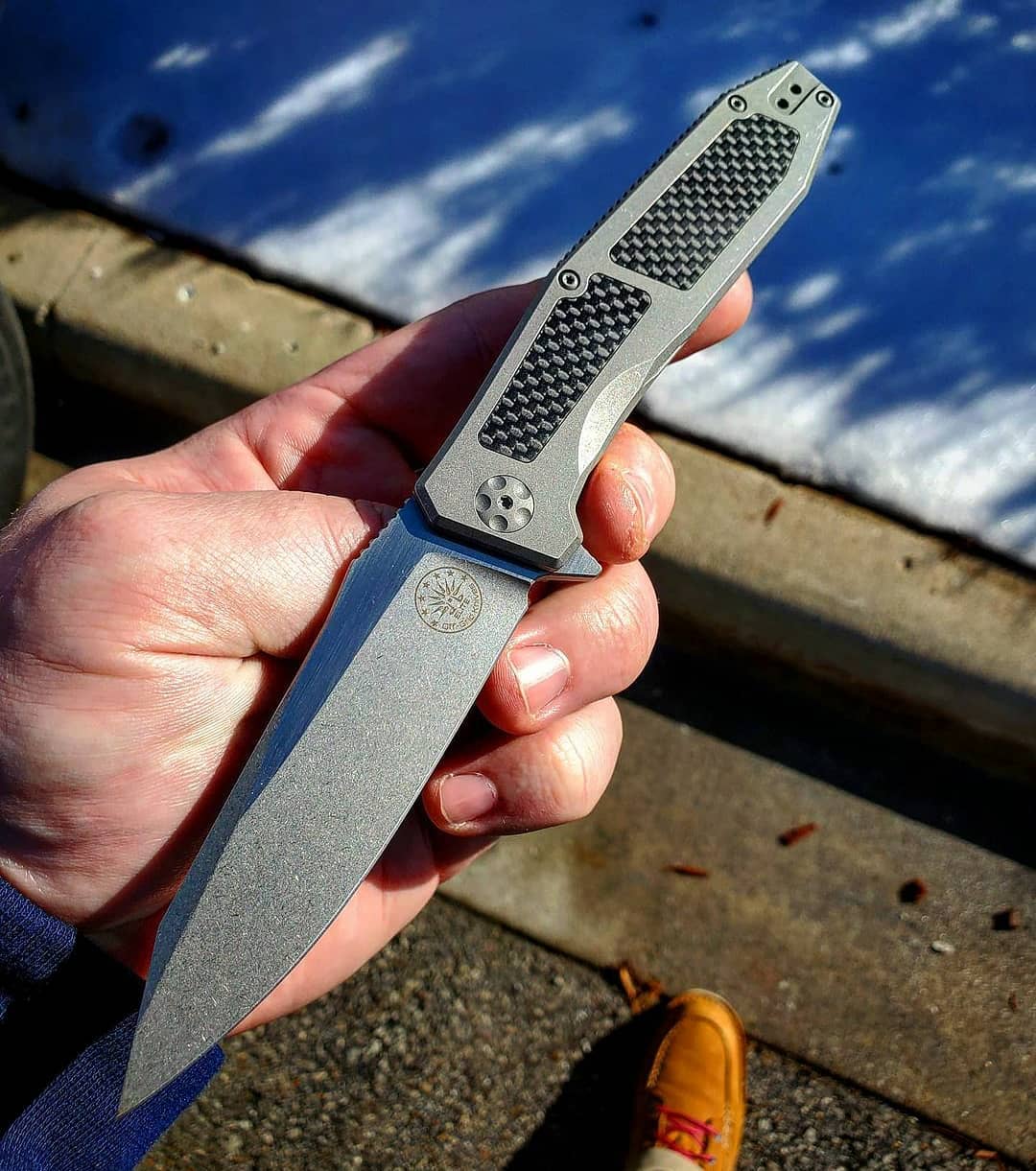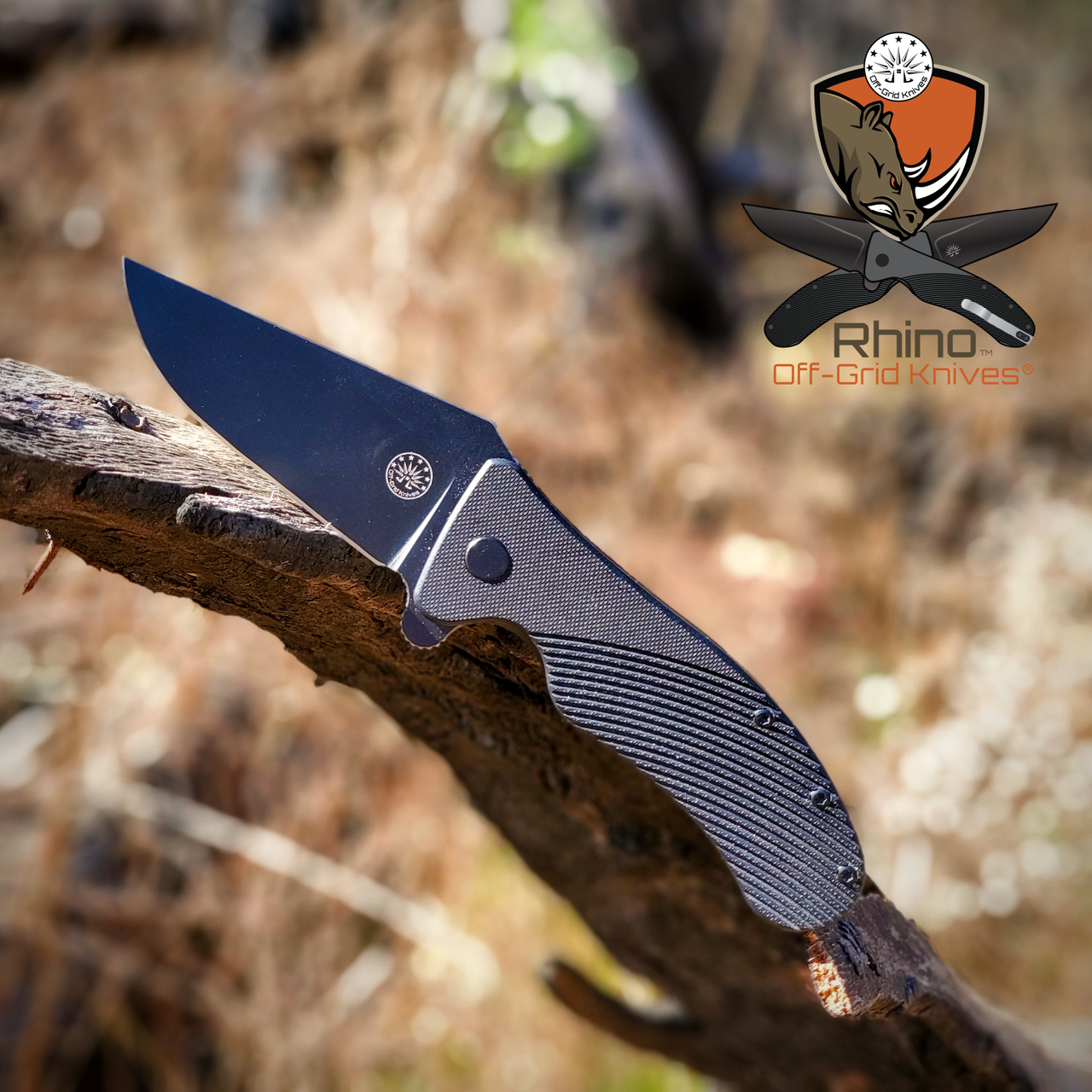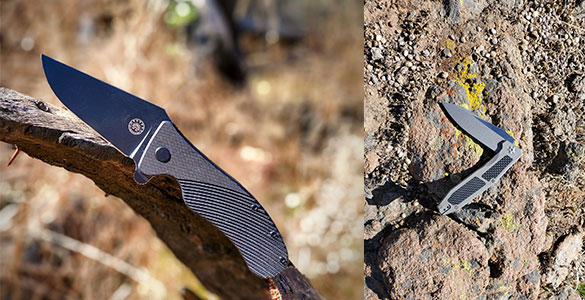How to Choose a Cool Pocket Knife that Doesn't Suck for your Outdoor Activities
Aug 18th 2021
At Off-Grid Knives, we're passionate about pocket knives, too. Knives are typically selected based on their intended use. There are different recommendations based on whether the tool will be used for camping, fishing, self-defense, or simply peeling fruit! Knives are usually selected as per the task at hand. However, there are times when you want something extraordinary, beautiful, sexy, and you would be green with envy if your friends had it.

Having said that, what makes a pocket knife a good tool?
The effectiveness of a pocket knife depends on three factors: Function, design, and performance. To select the best pocket knife for you, think about how you will use it when shopping.
An essential quality of a good pocket knife is its size; in this instance, a giant knife is not necessarily better.
In terms of portability and handling, a smaller pocket knife is better. Another qualitative characteristic of the blade is its material; steel blades are preferable because they offer corrosion resistance, durability and have a smooth satin finish for beauty.
A pocket knife's handle provides you with the ability to keep a firm grip, ensuring it is secure even when wet. Your hands should not slip off it if it has a good handle.

Reasons why you should upgrade your pocket knife
Man must always carry a pocket knife in his everyday carry. A cutting knife is probably an essential tool, especially for guys who spend most of the day doing big and small projects.
Every day carry knives get more use than any other item, but they are typically the last to be upgraded.
However, when did you last buy a new pocket knife?
With Off-Grid knives, purchasing the best pocket knife has never been easier.
As a result, they began making custom knives where people could select blade sizes, designs, and even the appearance and composition of the handle.
It's time to upgrade your folding pocket knife to a better everyday cutting tool if you have been carrying the same knife for years. Off-grid is suitable for several reasons.
Watches are typically chosen based on personal style, but pocket knives are usually chosen for their function only.
Stylish and functional.

Steel blades are ideal for long-term storage because they are resistant both to rust and corrosion. Single-handed opening and closing keep at least one hand available for other tasks. It is a lightweight design. A substantial and robust glass-filled nylon handle prevents slipping. You can carry the pocket clip in any direction as it is reversible. As a final touch, the knife has an attractive finish.
Versatility
You probably already carry a knife and know how many things you can do with it. Otherwise, you're going to be surprised. You'll find that if you carry a pocket knife, you'll constantly be reaching for your blade after a few weeks. In addition to being versatile, our knives are sturdy and durable. It's easy to get excited about new knives when they have excellent features, such as serrated edges and spring-assisted opening mechanisms. We design our blades to be challenging, too, to handle tough jobs and withstand harsh weather conditions.
5 Safety Rules for Pocket Knives
1. When Using a Pocket Knife:
Whenever you plan on using a pocket knife, make sure you create a safety circle around yourself. Nobody should be able to get close enough to hurt themselves. Spin the closed knife in your hands while holding it at arm's length. To deal with it successfully, you must leave the room - otherwise, you will threaten everyone else.
Keeping the knife tightly in your grip as you cut away from you will help you carve something safely. Make sure your dominant hand is always used.
2. Taking Care of Your Knife
Keep your pocket knife in good condition at all times. Knives that are well maintained are more useful and safer. Maintaining it frequently is crucial to safety. To cut through things with a dull knife, you would need a lot of force - and this means that you are more likely to slip and get hurt.
Do not forget to dry the blade before putting the knife away and cleaning it before storing it. In addition, you should continually lubricate your knife's hinge with the appropriate oil. Have your knife fixed if the blade is wobbly, or purchase a new one if the blade is crooked.
3. Opening and Closing
Knives like pocket knives and EDC knives frequently feature foldable blades, which make them safer to handle. Because of this object's dangerous and challenging nature, you should be very careful when opening and closing it.
It would be best if you first grasped it with your non-dominant hand and slowly pull the blade out with the thumb of your dominant hand. It could hurt you if the blade snaps back into place.
After that, hold the thick blade with both hands and pull it out while holding the thick part. The reverse process will close the blade. Take hold of the base with your non-dominant hand while closing it with your dominant hand. Push in the thick part of the blade slowly and cautiously.
4. Passing the Knife
Don't forget to shut down the tool whenever you pass the tool to someone else. However, if you must open the blade while you do so, there is a right way.
A knife has to be passed by the blade, and the blade's cutting edge must be facing away from the hand of the person passing the knife. You must hold it by the handle when you receive it. When taking the handle, the person should allow the giver to let go of it after acknowledging the giver.
5. Improper usage
It would be best if you didn't use the pocket knives for things they aren't designed for, even though they are versatile tools. Do not pry with your knife, as its blade may snap and cause serious injury to you or anyone near you. Consider using a hunting knife or a fixed-blade knife instead, which has more sturdy handles.

Conclusion
By following these rules, you will be able to safely use your cool pocket knife without hurting yourself or somebody else.






